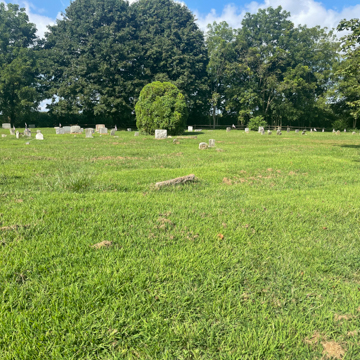This churchyard is the only physical remnant of the Mount Calvary African Methodist Episcopal (AME) Church. It is articulated in its appearance, with boundaries that clearly demarcate its area adjacent to lot on which the church once stood. The church building, erected in 1852, was one of the oldest churches in Chester County, Pennsylvania. Mount Calvary was an example of the pre–Civil War geographical movement of the AME Church and its efforts in expanding church influence through the acquisition of property and its active, mobile membership and leadership. Mount Calvary’s churchyard is also an example of burial grounds that provided space for Black parishioners at a time when space in larger public cemeteries and burial grounds was not typically offered. In Philadelphia, larger rural cemeteries operated by and for Black Americans were established in 1849 with the opening of Lebanon Cemetery in South Philadelphia and Olive Cemetery in West Philadelphia. Like other rural cemeteries, these two were nonsectarian; however, for Black Americans strongly tied to a church, like members of the Mount Calvary AME Church, preference was usually to be buried in the churchyard.
Daniel Alexander Payne, the sixth Bishop elected to the AME Church in 1852, dedicated the church building and appointed Reverend Herbert from Baltimore as the church’s first pastor. Besides serving as bishop, Payne was the church’s first historiographer, known mostly for his work, History of the African Methodist Episcopal Church, which chronicles the first comprehensive history of the AME Church from its original beginnings as a separatist movement of Black Methodists in Philadelphia in the late eighteenth century to its condition at the time of publication in 1891. In 1872 the church raised funds for a new roof and interior restoration. In 1884, the church relocated from Lower Oxford to East Market Street, where it was renamed Allen AME, in honor of Richard Allen, the first Bishop and founder of the AME Church. In 1935, the church building was destroyed by a fire, and the congregation moved to its current location at Eighth and Market streets in Oxford. As recently as 2022, community members are working to restore the remaining cemetery.
References
Allen African Methodist Episcopal Church. “Our History.” https://www.allenameoxfordpa.org/about.
Dickerson, Dennis C. The African Methodist Episcopal Church, A History. New York: Cambridge University Press, 2020.
Keels, Thomas H. Philadelphia Graveyards and Cemeteries. Charleston, SC: Arcadia, 2005.
Sloane, David Charles. The Last Great Necessity: Cemeteries in American History. Baltimore: Johns Hopkins University Press, 1991.














